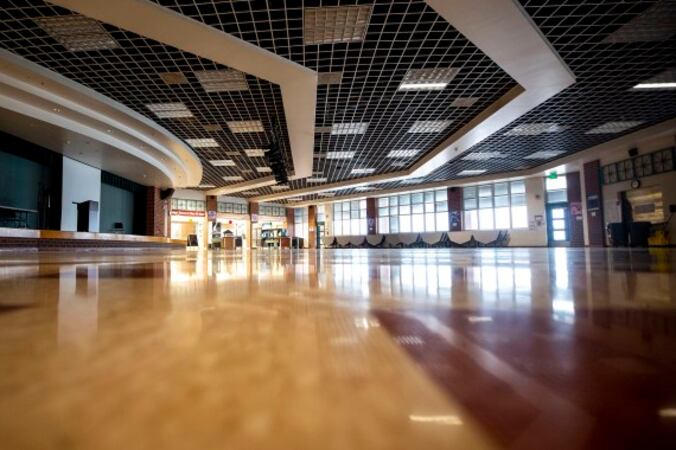The Denver school district has made a tentative but significant commitment: to reopen classrooms to middle and high school students in January if health conditions allow.
While elementary school students returned to school buildings this fall — some briefly, others for several weeks — rising COVID-19 cases and limits on the number of students and teachers allowed to interact with each other made operating middle and high schools difficult.
So what’s changed? What gives Denver Public Schools confidence that reopening middle and high school classrooms will be more tenable in January than it was this fall?
District officials, and one of the doctors advising them, have mentioned several factors.
The most important, perhaps, is what they referred to as a growing understanding that COVID is not widely spread in schools when safety precautions such as mask wearing, social distancing, and frequent hand washing are followed.
“The COVID prevention basics work very well,” said Dr. Bill Burman of Denver Public Health, who has been advising the district on its reopening plans.
Although there were nearly 300 outbreaks in Colorado K-12 schools from August to November, the median size of the outbreaks was relatively small: from three to five cases each.
When local public health officials first developed a dashboard to help Denver Public Schools decide when it was safe to hold in-person classes, they set the red level — meant to signify a flashing warning light — at 100 cases per 100,000 residents in the past 14 days.
But Burman said that since then, schools have shown they can operate safely when community transmission exceeds that: even at 500, 600, or 700 cases per 100,000 residents. As of Thursday, Denver County was reporting an average of 748 cases per 100,000 residents.
“What do we mean by ‘safely?’ With low rates of in-school transmission,” Burman said.
“The higher the community rate goes, the more cases are diagnosed among students and staff. That’s a given. We’re not in an NBA-style bubble,” he said.
But he noted that even as the number of cases rose this fall, “the assessment of in-school transmission remained low.”
That assessment led health officials to advise the district on another significant change: more than tripling the number of students allowed to interact with each other in person.
Instead of limiting the number of classmates a middle or high school student can interact with to 35, as the district proposed this fall, students will now be assigned to cohorts of up to 120 kids.
District officials were not available for an interview this week, but they explained the details during a public school board meeting Wednesday.
Small middle or high schools could reopen with individual class sizes not to exceed 35 students, new district rules say. Larger schools could operate on a hybrid schedule, with half of the students attending in person two days per week and the other half attending another two days.
At larger high schools, in-person classes would be capped at 17 students. Teachers could teach up to eight classes, potentially exposing them to 136 students each.
The new district rules could allow secondary schools to operate close to normally. But it’s not clear if that will happen. Several high schools told Chalkbeat they’re still formulating their plans.
Some schools may choose to keep instruction online but allow students to do their virtual lessons from school, either because a large percentage of students opt to stay remote or because a sizable number of teachers have accommodations to work from home.
The rationale for keeping cohort sizes small is to minimize the number of people who have to quarantine if a student or teacher gets sick, Burman said. Increasing cohort sizes is a tradeoff, he said: It allows for more in-person learning but may also lead to more quarantines. Public health officials have also found that larger cohorts are associated with larger outbreaks.
New state guidance should mitigate the number of students in quarantine. The guidance allows schools to quarantine a sick person’s close contacts instead of entire classrooms or cohorts.
That especially matters for teachers. Staff shortages were often cited by district superintendents as the reason for switching schools from in-person to remote learning this fall.
The same state guidance says teachers wearing KN95 masks and eye protection do not need to quarantine unless they were within 6 feet of a sick person for a cumulative 15 minutes. Colorado has pledged to provide one KN95 mask — certified in China and equipped with a filtering face piece respirator — per week to every teacher in the state.
“We have KN95 masks available to all of our teachers, and so it is critical that teachers wear these consistently,” Interim Superintendent Dwight Jones told the school board Wednesday. “That’s what we’ll be communicating and really working with our teachers to do.”
Board President Carrie Olson, a former Denver teacher who is now teaching at the university level, said she understands the KN95 masks can be uncomfortable.
“I’m with all the teachers who are saying, ‘It’s hard to teach in that! It’s hard to have your voice heard,’” Olson said. “We’re all going to have to get used to that. As one teacher said, ‘I’ll work on it as long as it means I can get my students back into my classroom.”
Data presented to the school board Wednesday, but not discussed publicly, shows waning participation in remote learning even as attendance has stayed steady. Students are showing up to their virtual classes but fewer are completing their assignments.
Participation dropped more among elementary students than middle and high school students, who posted slight declines. Kindergarteners showed the steepest declines, from 84% participating in September to 56% participating in November.







